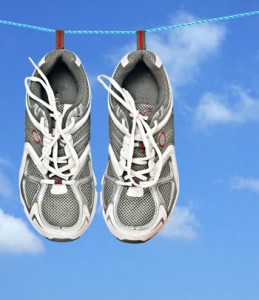Picking out new shoes nowadays can be overwhelming. There are so many options: running, walking, cross-training, not to mention all of the brands. How do you choose the correct one for your workout — and not just default to the cheapest option?
The correct shoes are an important part of your workout. If you are wearing the wrong kind of footwear or not replacing them often enough you could be setting yourself up for some pain.
Here are 10 tips to arm yourself with the next time you’re out shopping:
1. One shoe won’t solve all. Walking shoes are stiffer than the more flexible running option. If you are going to do both, get a pair for each.
2. Know your foot. Do you have a high arch? A low one? Do you walk on the outside of your feet? These are things to know and embrace when buying footwear.
3. Measure your foot. You should be measuring your foot twice a year. It’s a myth that feet don’t change once you’re an adult.
4. Buy shoes toward the end of the day. Your feet swell during the day and expand while you walk or run. You want your shoes to fit when your feet are at their largest.
5. Bring your own socks. Not only is it hygienic, it will give you the proper feel.
6. Don’t buy thinking “I’ll break them in”. Shoes should feel comfortable from the get go.
7. Use the rule of thumb. There should be about 3/8-1/2 inch between the front of your big toe and the end of the shoe — about a thumb’s width. Your toes should feel like they have room to breath in the shoe.
8. Understand the fancier shoe. Some models of shoes come with inserts or have extra padding in the heel. These are good for people with heel pain but not good for those who twist ankles easily.
9. Consider the price. Good-quality running and walking shoes are fairly expensive but worth the price. Cheaper will not be better performance-wise in this instance.
10. Know when to replace your shoes. After 350-400 miles of use, running shoes tend to wear out. Look for signs of wear and tear on the shoes — that’s the sign to start shopping again.






